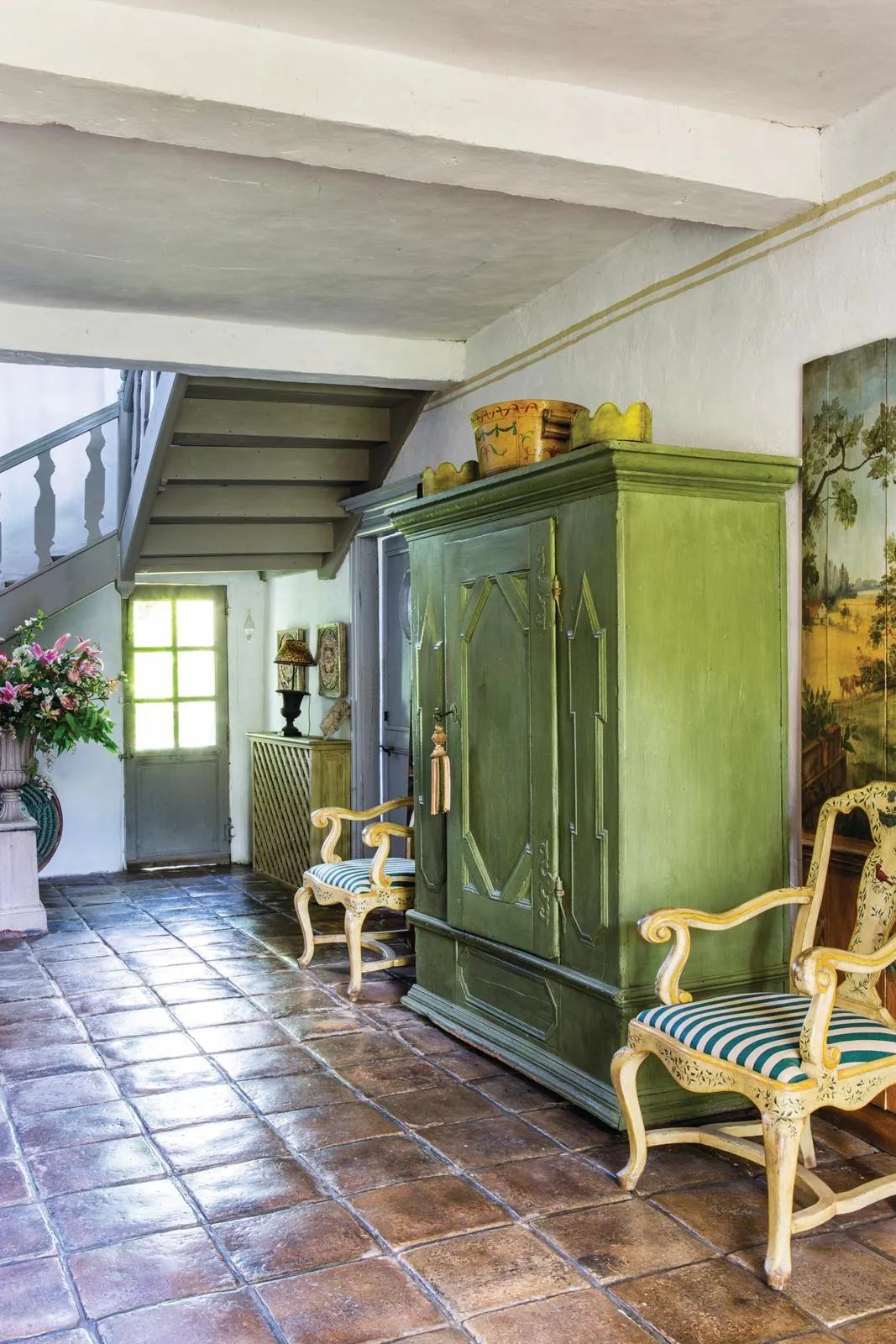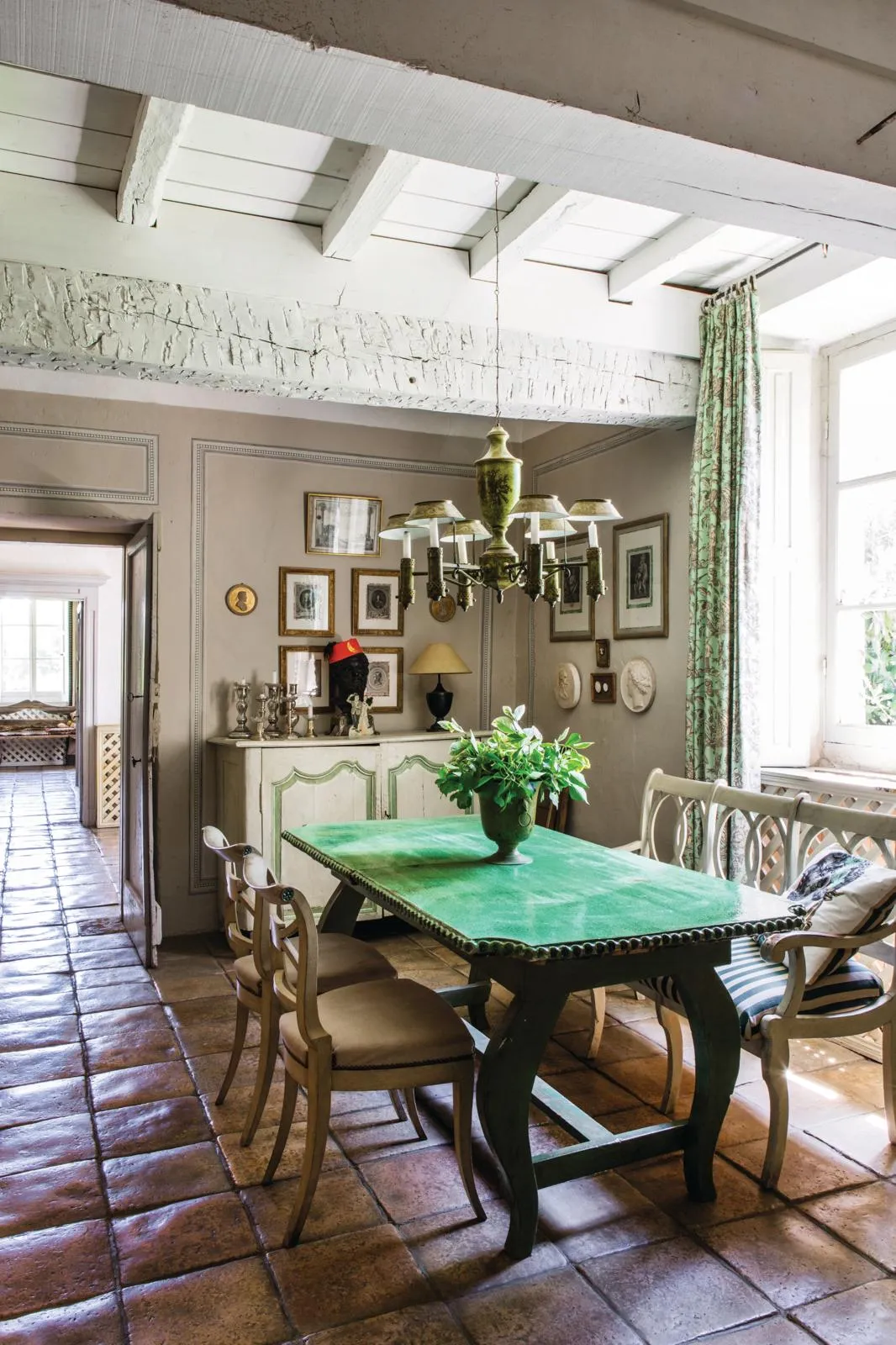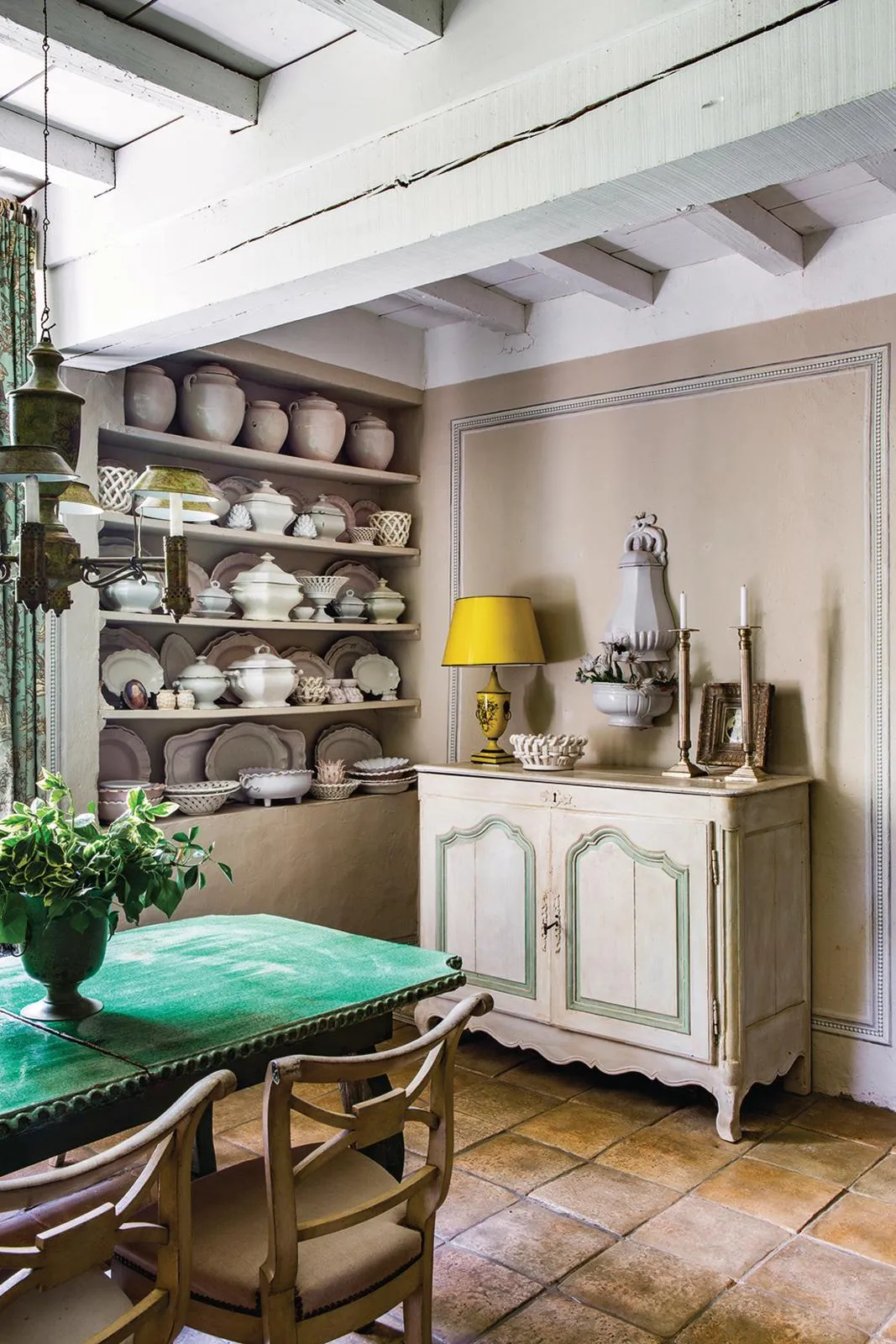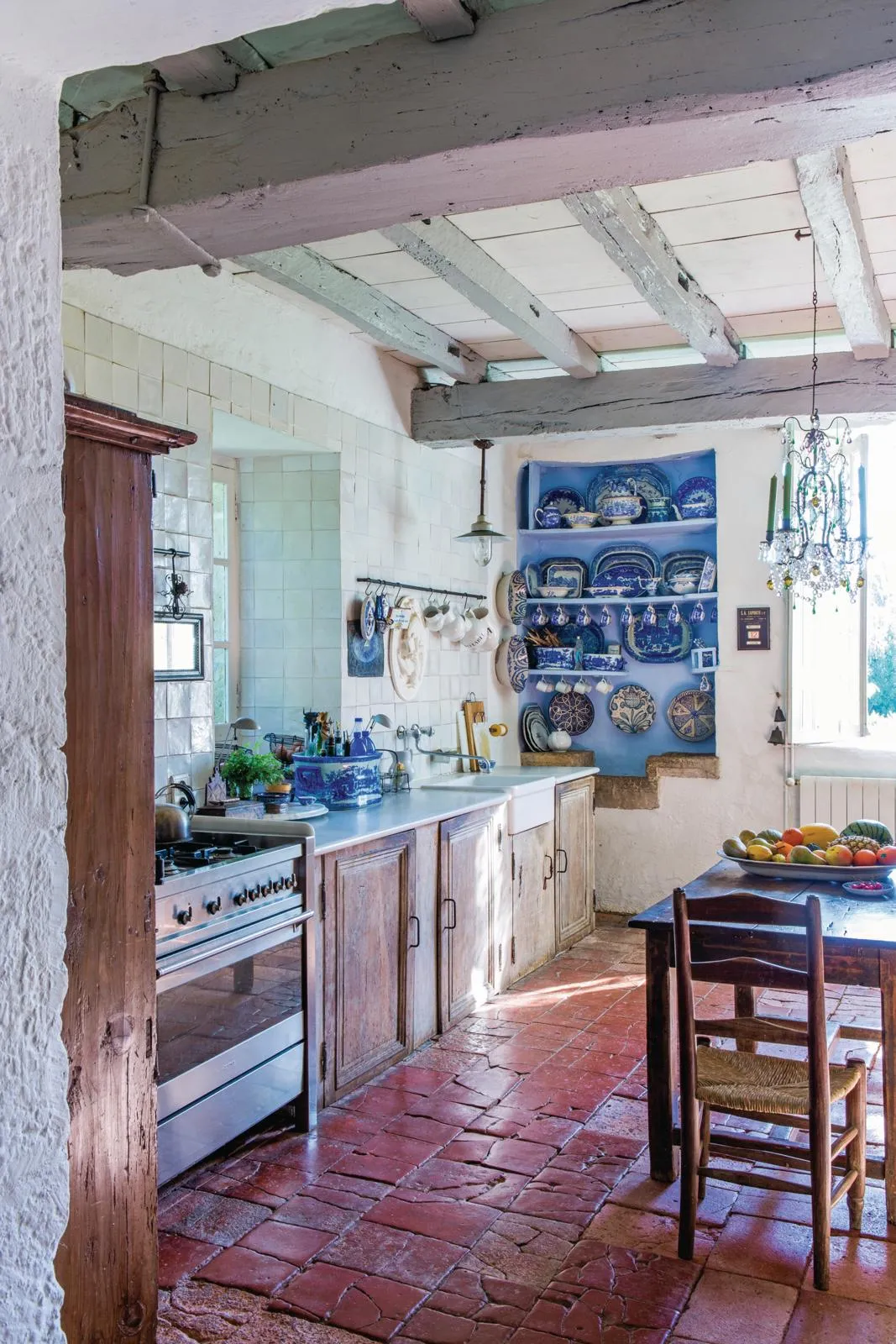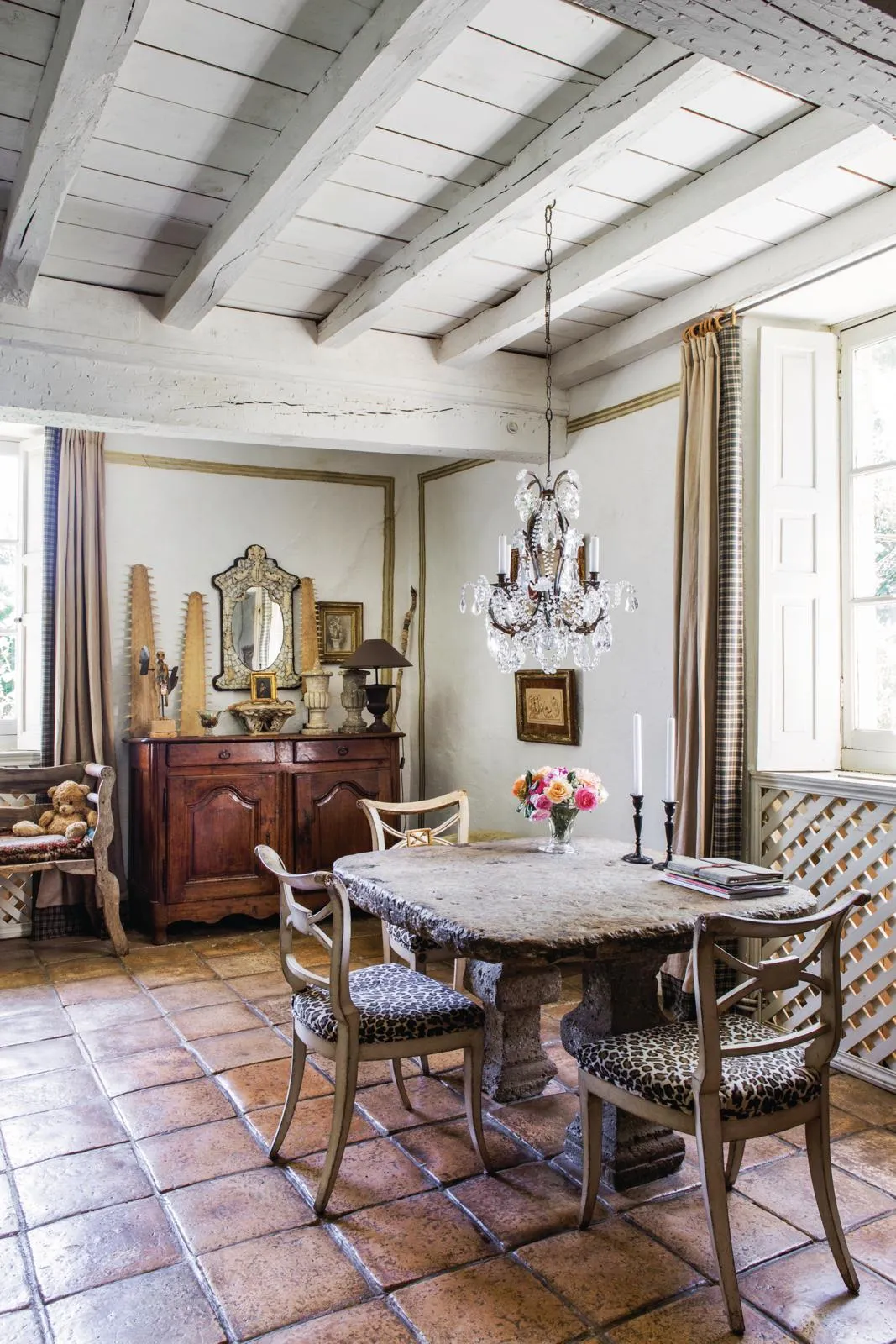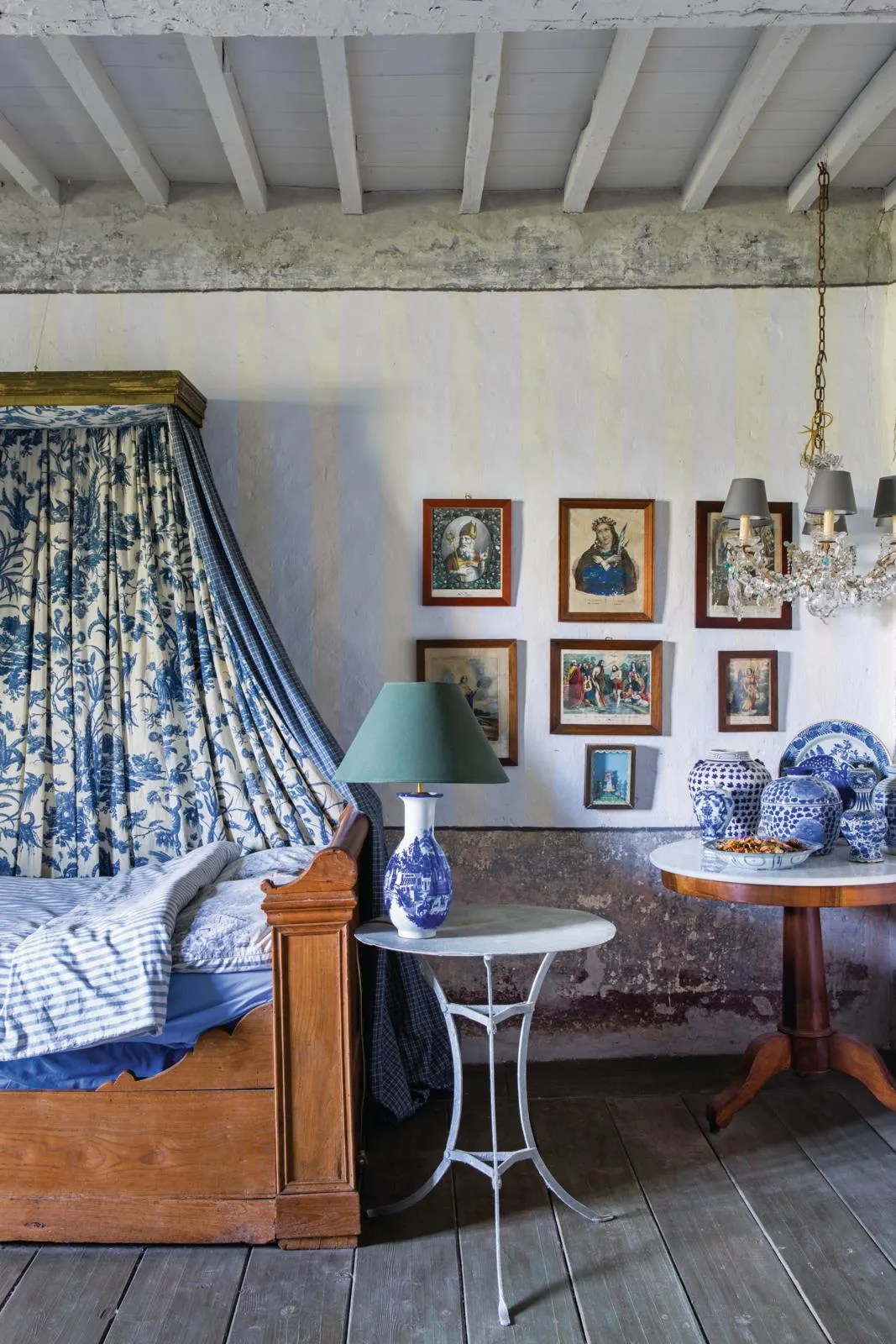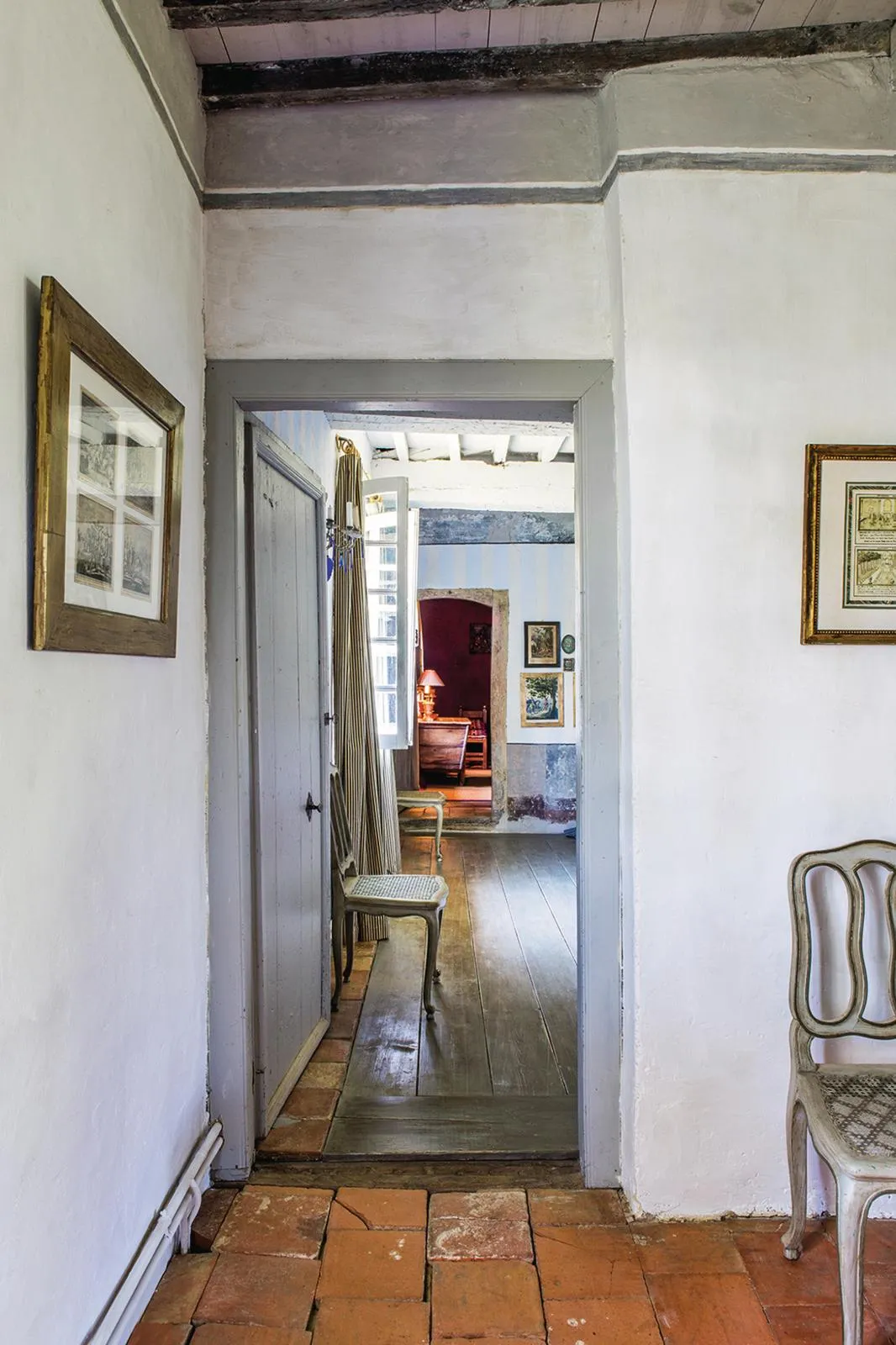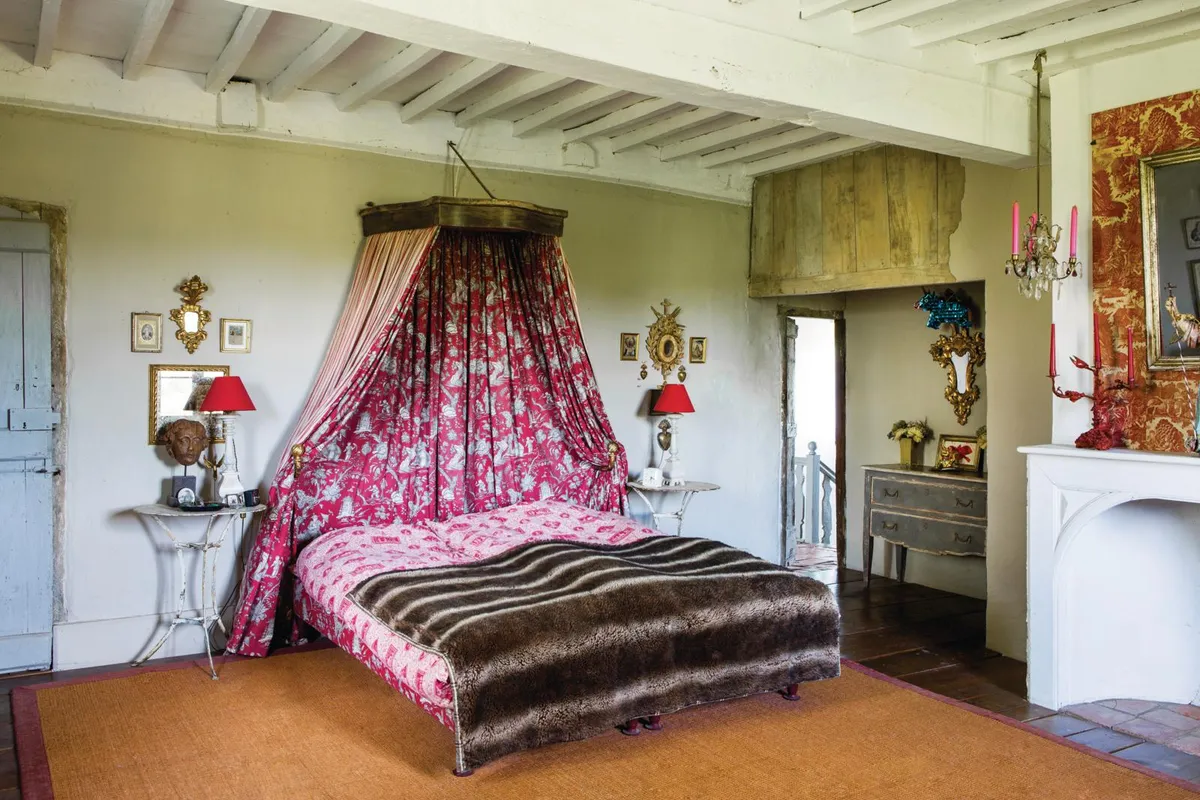For Joop and Wim, nothing could be more charming, or tempting, than an old house in desperate need of repair. ‘It was almost falling apart,’ they recall as they explain how they came across the maison de maître that is now their home.
Forty years ago, abandoned houses in the Midi-Pyrénées (now the Occitanie) region of the south of France were countless. The rural population had dwindled following the disappearance of traditional industries, such as mining, spinning, weaving and fabric dyeing.
The homeowners were mainly French farmers who didn’t particularly care for the aesthetics of old buildings. Not so Joop and Wim, who were able to see past the dilapidation to a wealth of possibilities.
Having already restored one farmhouse in the Haute-Garonne – a property they’d acquired with friends before moving permanently from Holland to France – the couple were well-versed in the trials and tribulations of major restoration.
Their future home, which dated from 1757, stood just outside a small village, next to the churchyard. It had belonged to a notable local family, but for the previous 25 years it had been abandoned and left to the elements.
The roof was missing and the stairs were badly damaged, there was no electricity and no running water, no bathrooms and only one toilet. ‘But its spirit was phenomenal,’ Joop and Wim explain. Having persuaded the last heiress to sell, the couple set to work.
You might also like a 15th-century farmhouse in south-west France
Sheds and stables beyond repair were demolished and a large garden established in their place. Once a new roof had been installed they began to reinstate the staircase. An old baluster found languishing in the attic provided the template for the replacements needed to restore the banister.
The couple make an impressive team, their talents perfect for the challenge: Wim is a gifted craftsman and Joop is a talented decorator with a passion for colour and fabrics – skills he acquired while working as a costume designer.
When walls were not straight or smooth enough to be papered, Joop picked up his brushes and painted them with stripes, flowers and arabesques. Their style is simple, and they try not to ever make things look too slick or polished.
The first room to be finished was what’s fondly known as the Spanish room, with windows in both north and south façades. It owes its name to the heavy furniture and rich colours, inspired by historic Spanish palaces and churches.
The original floor tiles in the kitchen and upstairs on the first floor landing and corridor have been laid in sand, without using mortar, as was customary in the 18th century. The windows on both sides of the hall allow sunlight to pour in, making it the perfect spot for the couple’s potted citrus trees to thrive. At the end of autumn, they carry the plants upstairs, to ride out the winter safe from the frosts.
In springtime the trees blossom and the delicate fragrance of lemon, lime, tangerine and kumquat are carried through the house. Next to the Spanish room, Wim and Joop installed a bathroom as well as a south-facing guest room with views of the Pyrénées.
You might also like an 18th-century farmhouse restoration in France
Two lits bateaux are the focal points of the room. Each has a simple scrolled headboard that is an elegant contrast to the theatrical toile de Jouy canopies that hang above them.
Downstairs, where the sitting room, dining room and library are connected by the same beautiful tiled floor, every wall, tabletop and window sill is filled with intriguing collections: glassware, dinner sets, African and European artefacts, vases and pots, shells, corals, animal skulls and skeletons.
Apart from the tap and the oven, few items on show in the kitchen are from the 21st century. A large collection of blue-and-white earthenware and porcelain is displayed on bright blue shelves that are set into the whitewashed wall. The fridge is hidden behind an old door that was sawn in two, and the freezer has been banished to the laundry room.
Wim and Joop love to host lunches and dinners. Friends gather in the dining room to eat at a remarkable emerald green table, its ceramic top is a rare find, they explain, being made up of two large glazed slabs. The artisan who made it has ended production because, on average, nine out of 10 of his creations cracked during the firing process.
In the evenings, guests dine by candlelight, the room lit by chandeliers and sconces, and in winter, by the fire flickering in the hearth. Having amassed a huge collection of ceramics, it’s only natural that Wim and Joop serve each course on plates that were designed with specific dishes in mind.
Corner cupboards and shelves overflow with 18th and 19th-century platters and tureens and, beautiful though they are, everything is used and enjoyed. Nothing is merely ornamental. This is how the couple share their passion, they say: giving life to their antiques, as they have to their home.
More homes from Homes & Antiques
- An 18th-century house in West Sussex
- A renovated ancient French farmhouse
- Inside Kingshill Farmhouse in Kent
- A traditional Swedish farmhouse
Sign up to ourweekly newsletterto enjoy more H&A content delivered to your inbox.

